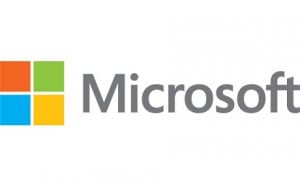Windows Server Datacenter now has more to offer
Windows Server 2012 became generally available in September 2012 and came in two flavors through volume licensing: Windows Server Standard and...
2 min read
![]() Zones
:
Dec 12, 2014 4:00:15 AM
Zones
:
Dec 12, 2014 4:00:15 AM

After 12 long years, Microsoft will end all support for Windows Server 2003 on July 14, 2015.
Any organization running Windows Server 2003 after End-of-Support (EOS) will face a big ongoing maintenance expense; one that will quickly exceed what you might spend to migrate to Windows Server 2012 R2 – and that includes the cost of required hardware upgrades for those still running Windows Server 2003 on x86 servers.
You’ll also be at risk of failing to meet regulatory and industry compliance standards, which could cost you business.
The upside of all this is that your organization is about to make a big leap forward in IT. It’s an event that will transform your datacenter, and could open up a whole new world for your business.
The Microsoft team at Zones can help you make the leap to a modern data center that can easily extend beyond on-premises resources to leverage cloud resources. Ask your Zones account executive for a full briefing on our complete discovery, assessment, targeting, and migration services that can help get your data center up to speed before the July 14 deadline.
Migrating to Windows Server 2013 R2 is a four-step process. You’ll need to discover your current environment; catalog all applications and workloads; choose a migration destination for each; and move it all to the new environment. Zones can help you at every stage, with helpful tools and deep Microsoft expertise that can smooth the way and shave precious days, weeks or months off the process for most organizations.
With Windows Server 2012 R2, you’ll get more value from your server hardware, empower mobile workers, protect your business, and secure your data. Combine that with Microsoft Azure and Microsoft Office 365, and you’ll create an infrastructure that enables IT to respond to the needs of the business more quickly and with greater agility:
Consolidate applications onto fewer servers to save on hardware costs and get more from your investment in IT. Virtualization is built into Windows Server 2012 R2 at no additional cost.
Know that when downtime occurs from an unexpected event or natural disaster, your data is safe and you can get your business back up and running in minutes.
Give employees exactly as much storage as they need, when they need it and scale storage up and down quickly—all without paying a fortune for expensive storage solutions.
Enable mobile workers to access line-of-business applications hosted on-premises or in the cloud while providing peace of mind that corporate data remains on the server.

Windows Server 2012 became generally available in September 2012 and came in two flavors through volume licensing: Windows Server Standard and...
Windows Server 2003 End of Support: July 14, 2015 By now, your strategy for migrating away from Windows Server/R2 2003 should be well underway. ...

Navigating the move from per-processor to per-core licensing With the arrival of Windows Server 2016, customers can soon be running a cloud optimized...